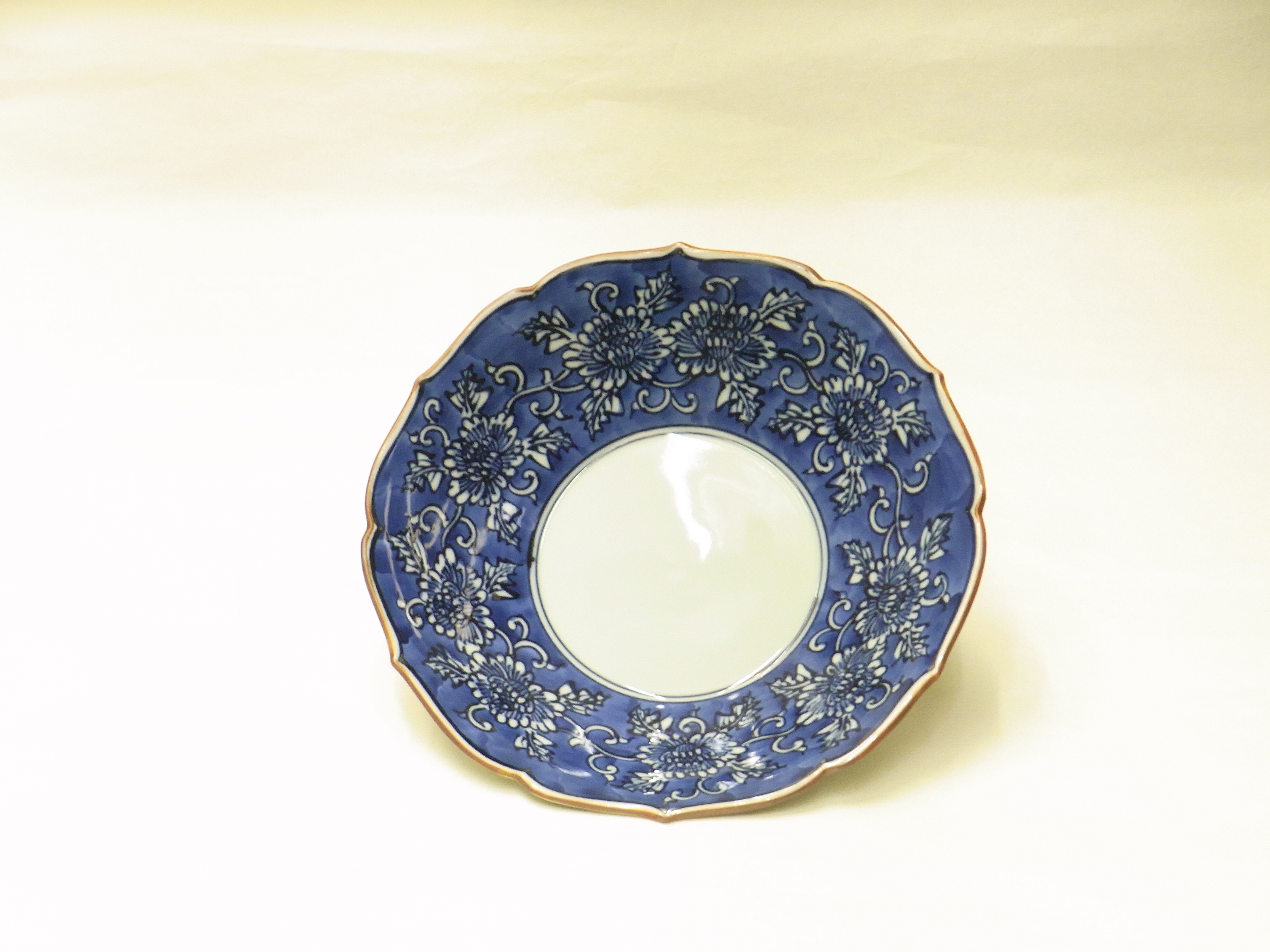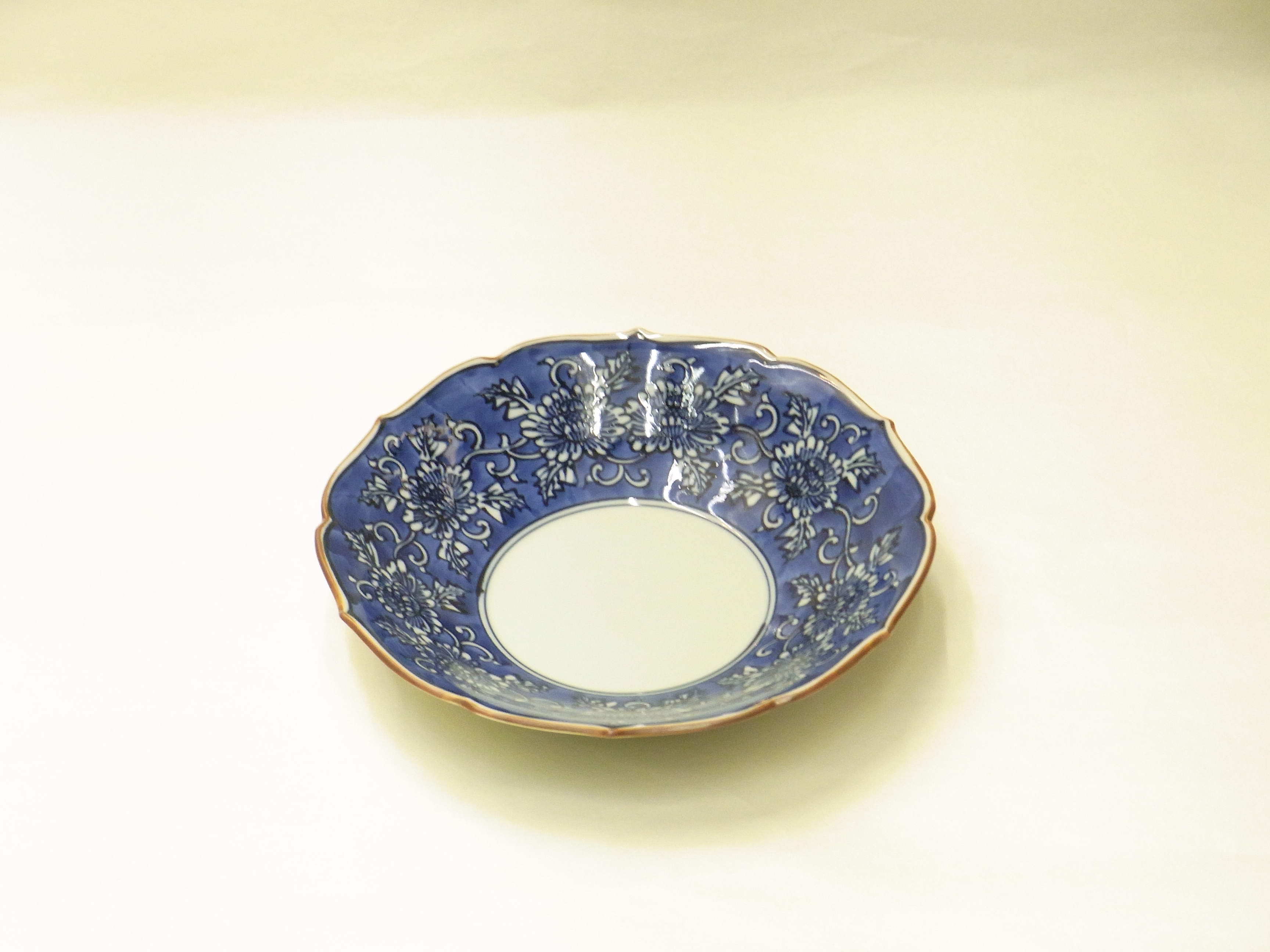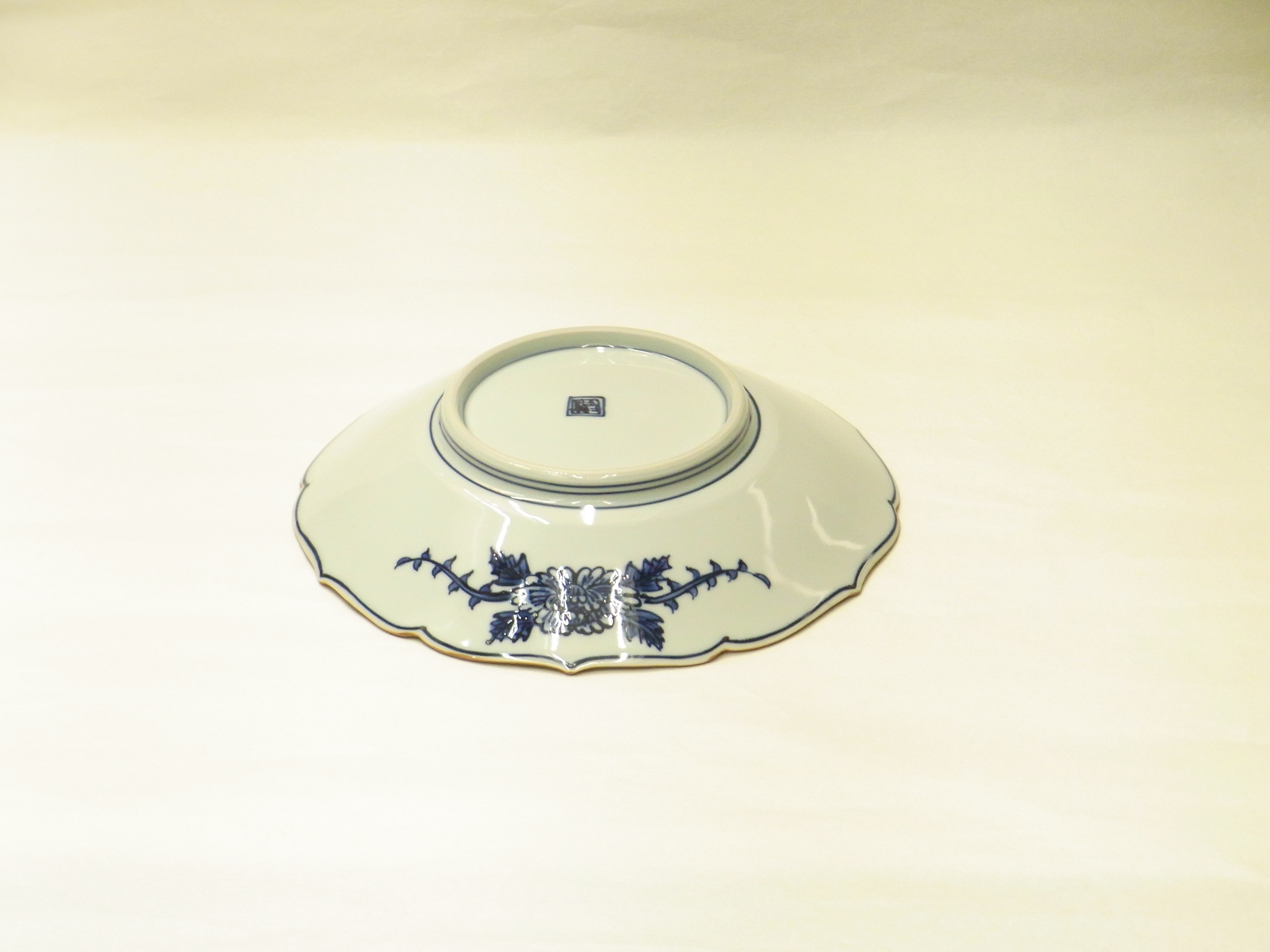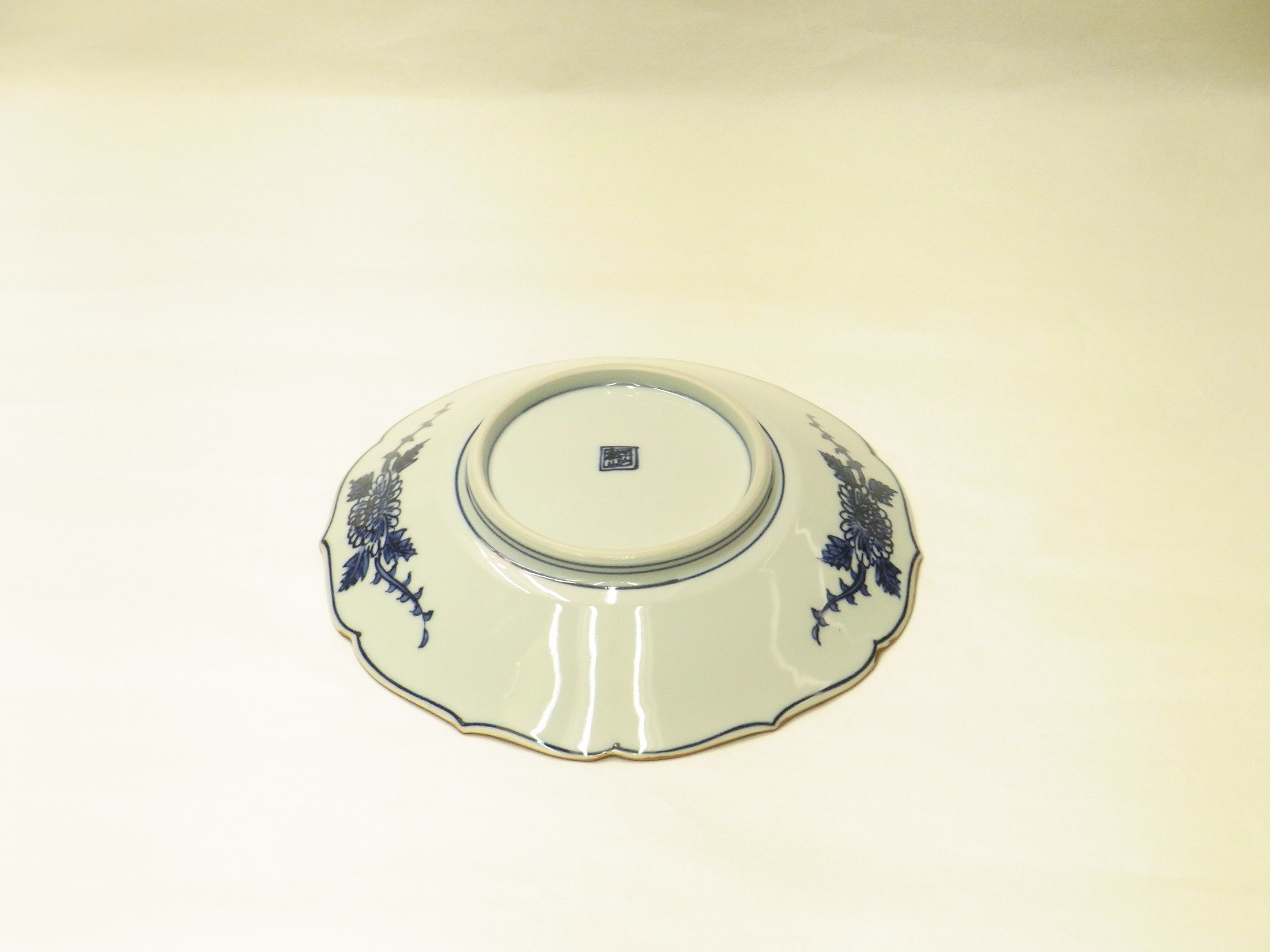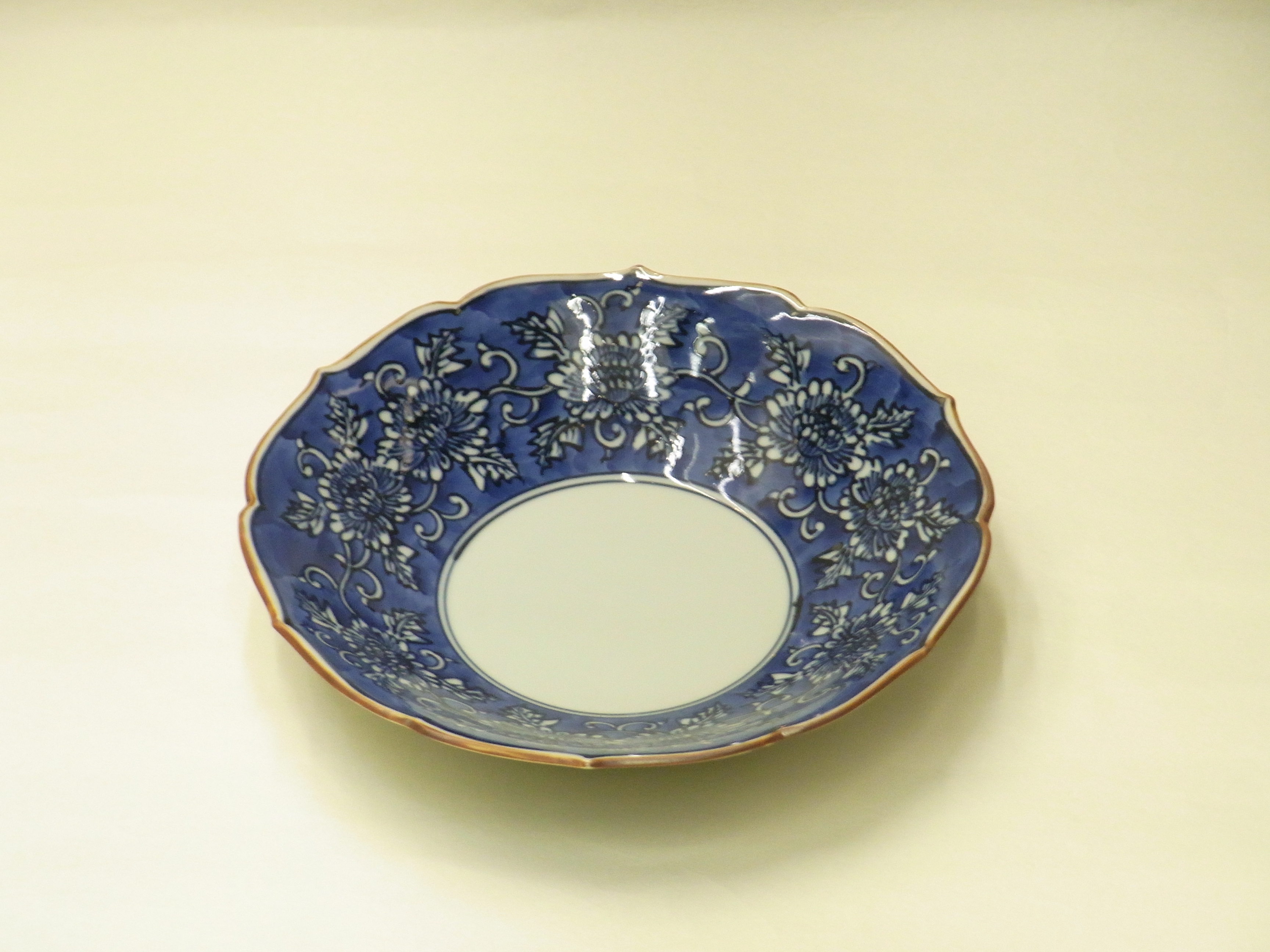有田焼から染付の浅鉢のご紹介です。
この鉢は牡丹の花が大胆に描かれ、その周りを濃(だみ)と言われる技法を
使って描かれています。
濃(だみ)とは呉須(ごす)で素地に絵付け(染付)をする場合
線描きを施してから、その中を太い筆に呉須の溶液を含ませ
溶液を溜めながら塗る方法をいいます。
呉須の溶液の濃度によって、表現する場合もあります。
鉢の見込み以外はすべて描かれており、手間がかかっています。
裏面はシンプルに、大きめの牡丹の花が二つ、対角線上に
描かれています。
また、鉢の周りは輪花といって、鉢の縁が花のように一定の間隔で
出たり入ったりしています。
染付はシンプルで大人しいので、地味な感じがしますが
奥が深く、お料理をに合わせやすく、引き立てて
飽きにくく 高尚な感じがします。
染付のファンの方が多いのもうなづけます。
この鉢も上品で末永くお使い頂ける器の一つです。
径 21㎝ 高さ 4.5㎝
It is an introduction of the shallow pot with the dye from Arita ware.
This pot is boldly drawn peony flowers, and the technique called “Dami” is used around it.
It is drawn using.
When painting (with dyeing) is used in a potu
After applying a line drawing, a thick brush contains a solution of the pot.
It is a method of applying while storing the solution.
Depending on the concentration of the solution of the pot, it may be expressed.
Everything except the prospect of the pot is drawn, and it takes time and effort.
The back side is simple, two large peony flowers, on the diagonal
It is drawn.
In addition, around the pot is called a wreath, the edge of the pot is at regular intervals, such as flowers
I go in and out.
Because the dyeing is simple and quiet, it feels sober
Deep, easy to match the dish, bring out
It is hard to get tired and feels noble.
There are a lot of fans with dyeing.
This pot is also elegant and one of the bowls that you can use for many years to go.
這是從阿裡塔陶器染色的淺碗的介紹。
這個碗是一種技術,其中蓮花被大膽地繪製,並圍繞它。
是用來畫的。
當在奧蘇米(蘇)在地上畫一幅畫時
繪製線條後,在厚刷子中加入蘇的溶液。
它來測量如何應用溶液,同時舔溶液。
根據蘇的溶液濃度,它也可能表示。
除了碗的可能,一切都被繪製出來,這需要時間和精力。
背面很簡單,兩朵大花,對角線上
被繪製。
此外,在碗周圍被稱為花環花,碗的邊緣像花一樣定期
他們出去或出去。
染色是簡單和成人的,所以感覺清醒。
深,易於匹配烹飪,並拉起來
我很難感到無聊,我覺得很崇高。
更多的風扇染成汙。
這個碗是優雅和碗之一,你可以使用很長一部分。
这是从阿里塔陶器染色的浅碗的介绍。
这个碗是一种技术,其中莲花被大胆地绘制,并围绕它。
是用来画的。
当在奥苏米(苏)在地上画一幅画时
绘制线条后,在厚刷子中加入苏的溶液。
它来测量如何应用溶液,同时舔溶液。
根据苏的溶液浓度,它也可能表示。
除了碗的可能,一切都被绘制出来,这需要时间和精力。
背面很简单,两朵大花,对角线上
被绘制。
此外,在碗周围被称为花环花,碗的边缘像花一样定期
他们出去或出去。
染色是简单和成人的,所以感觉清醒。
深,易于匹配烹饪,并拉起来
我很难感到无聊,我觉得很崇高。
更多的风扇染成污。
这个碗是优雅和碗之一,你可以使用很长一部分。
